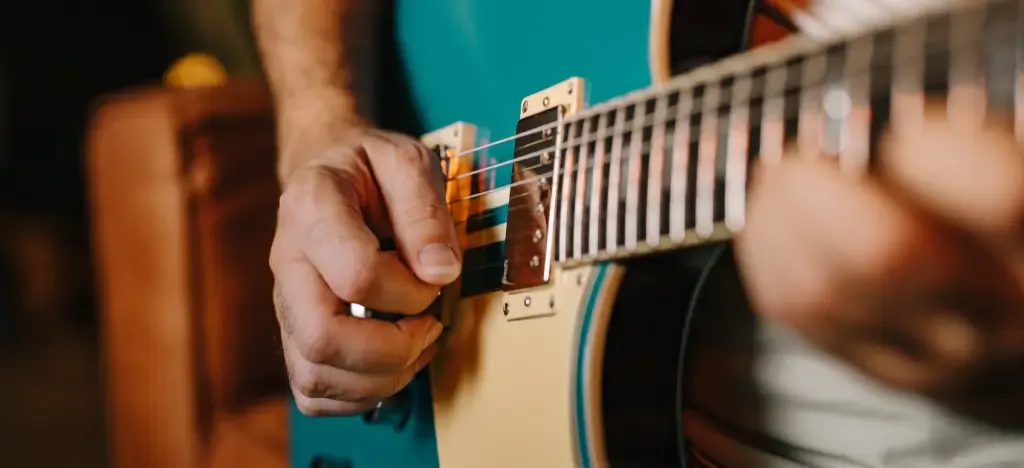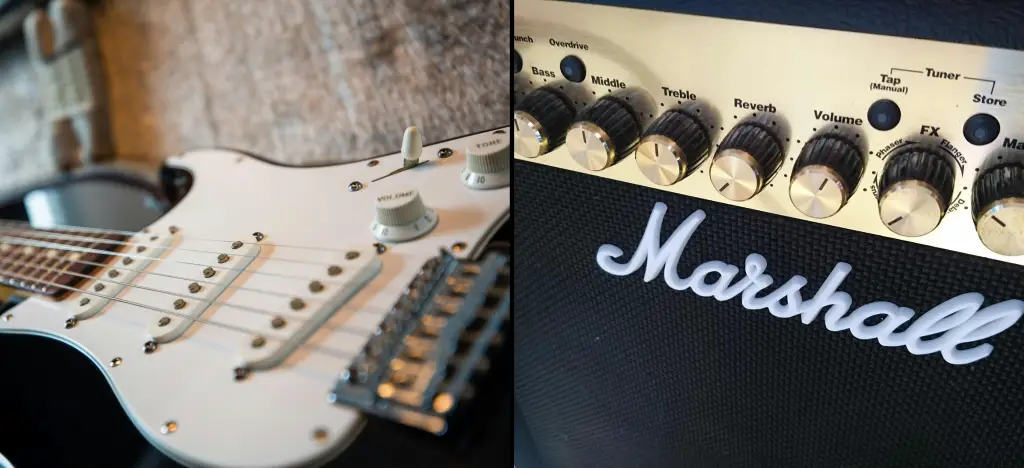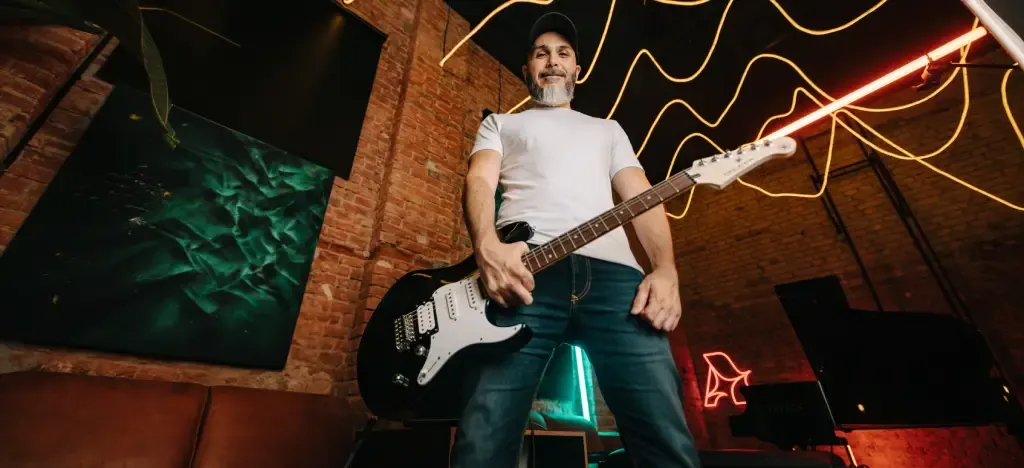All I wanted to do as a teenager was sound like Nirvana. I remember walking into the local music shop, clutching my birthday money, dead set on buying the distortion pedal I'd seen in Guitar World. Never mind that I didn’t even have a decent amp to plug it into. I figured the pedal would do the magic. Instant grunge. Job done.
It didn’t really work that way.
The amp was a tinny 10-watt practice cube, and I didn’t know a thing about EQ or gain. But more than that, I didn’t realise how much tone was coming from Kurt’s fingers — the way he dug into the strings, the sloppiness that somehow sounded right, the rawness in his phrasing. You can’t buy that in a box.
Years later, I’ve learned (the hard way) that sounding like your guitar hero has far less to do with expensive gear — and far more to do with setting up your amp and how you play. Here's what I wish someone had told me back then.
- 1. Guitar tone starts in your fingers
- 2. Copy the phrasing, not just the notes
- 3. Your hero’s tone = knowing their settings
- Free video tutorial: Dialling in your guitar tone
- 4. Record yourself — and start listening
- 5. The real guitar tone secret? Confidence.
- Get started on your tone
- Quick tone tips: how to sound like iconic guitarists
1. Guitar tone starts in your fingers
 I spent years avoiding fingerpicking, thinking it was only for folkies or classical players. It felt fiddly, delicate, and a bit out of place for someone who just wanted to thrash power chords. I thought if it didn’t involve distortion, it wasn’t worth learning.
I spent years avoiding fingerpicking, thinking it was only for folkies or classical players. It felt fiddly, delicate, and a bit out of place for someone who just wanted to thrash power chords. I thought if it didn’t involve distortion, it wasn’t worth learning.
Looking back, I missed out on so much tone and feel. I now understand how the attack of your fingers, the angle of your pick, even the pressure you use — it all shapes the sound before your signal even touches a cable. I had been so focused on distortion, chorus and delay that I never focussed the tone coming from me.
An idea I recommend is to closely watch your favourite guitarist. Pick one live performance or studio session video and slow it down. Watch their hands, their body language, even how they hold the pick. Are they digging into the strings or gliding over them? Do they keep things tight and minimal or loose and expressive? How do they move between chords, shape bends, or mute between notes?
These small details often make a bigger difference than gear ever will.
🎸 Try this:
Play a simple riff three ways — with a pick, fingerstyle, and palm-muted. Just notice how different it feels and sounds.
💡 ARTMASTER TIP: Need some quick tools while you practise? Tune up, find chords, and lock in your timing with the free Guitar Toolkit — featuring a tuner, chord finder, and metronome, all in one place.
2. Copy the phrasing, not just the notes
 When I first started learning guitar, I thought the job was to hit the right notes in the right order. If I could play the riff, I’d nailed it — right?
When I first started learning guitar, I thought the job was to hit the right notes in the right order. If I could play the riff, I’d nailed it — right?
But no matter how closely I followed the tab, something was always missing. The notes were technically correct, but the feel was flat. It sounded like a bad cover band version of the real thing — the structure with none of the soul.
What I didn’t get back then was that great players don’t just play notes — they phrase them. They stretch some, cut others short, throw in a ghost note, dig into one string harder than the rest. It’s those tiny, expressive choices that give a part its personality.
🎵 Think about it:
Stevie Ray Vaughan’s wild bends and unpredictable accents
H.E.R.’s subtle slides and perfectly timed silences
Kurt Cobain’s instinctive push-and-pull rhythm that shouldn’t work — but does
This stuff doesn’t live in notation. You have to hear it, feel it, and experiment with it yourself.
🎧 Try this:
Take a riff you know inside out and play it three different ways — slower, more aggressive, more relaxed. Don’t change the notes, just the delivery. You’ll be amazed how much it transforms.
💡 ARTMASTER TIP: New to reading tabs? Check out our step-by-step guide on how to read guitar tabs — perfect if you want to get more out of your practice and start learning riffs faster.
3. Your hero’s tone = knowing their settings
 One of the best things I ever did was stop obsessing over pedals and start learning how to shape my tone using the tools I already had — my amp, my guitar’s pickup switch, and the tone knob I’d ignored for years.
One of the best things I ever did was stop obsessing over pedals and start learning how to shape my tone using the tools I already had — my amp, my guitar’s pickup switch, and the tone knob I’d ignored for years.
For ages, I left the EQ knobs on my amp right in the middle, never touched the tone knob on my guitar, and just assumed the bridge pickup was for solos and the neck was for jazz. Honestly, I had no clue what I was doing — I just kept hitting the distortion pedal and hoping for the best.
But here’s the thing: EQ, pickup choice, and the tone knob are the holy trinity of good tone. Together, they shape the sound before any pedal even enters the equation. And once you start using them intentionally, even a cheap guitar through a basic amp can sound surprisingly pro.
EQ on your amp
Let’s break it down:
Bass: Adds low-end thump. Keep it tight — too much sounds muddy.
Mids: The core of your tone. More mids = warmer and fuller. Less mids = scooped and modern.
Treble: Adds brightness. Dial it in for sparkle or roll it off to tame harshness.
Try setting your EQ like this:
Slash-style lead: High mids, moderate treble, low-to-mid bass. Add gain for sustain.
Funk/Pop clean (think Dua Lipa live band): Flat mids, slightly boosted treble, reduced bass for tight clarity.
Pickup selection
Your pickups shape your tone before it hits the amp. If you're not using them deliberately, you're leaving tone on the table.
Bridge pickup = brighter, more cutting, great for leads and rhythm with attitude.
Neck pickup = warmer, rounder, smoother — perfect for solos, clean tones, or mellow vibes.
Middle position (or combining pickups) = balanced, scooped, and ideal for clean rhythm or funky parts.
Even budget guitars have usable tones — it’s just about using them.
The tone knob: not just for jazz players
I used to think the tone knob was there in case I ever joined a swing band. But turns out, it’s incredibly useful.
Rolling off treble on the bridge pickup makes leads smoother — less harsh, more vocal.
Turning the tone down on the neck pickup gives you that creamy, almost violin-like sound.
🧠 Pro tip: Combine bridge pickup + slight tone roll-off + mid-heavy EQ, and you’ve basically got a Slash-style solo tone — no pedals needed.
Free video tutorial: Dialling in your guitar tone
🎥 Want to see it in action?
Check out our free video lesson where guitar soloist Kfir Ochaion breaks down the core amp settings that help you dial in a tone inspired by Eric Clapton — no expensive gear required, just smart tweaks that make all the difference. 👇
4. Record yourself — and start listening
This one changed everything for me. The first time I recorded myself on Cubase and listened back, I was pretty underwhelmed. I thought I sounded great while I was playing — but the playback told a different story. The timing was a bit off, the tone wasn’t quite there, and the energy I felt while playing didn’t come through at all.
Recording let me hear what I actually sounded like — not what I imagined I sounded like. And from that moment on, everything improved faster.
🎧 Try this:
Record a short loop — just a riff or chord progression — and listen back with fresh ears. Ask yourself:
Is your pick attack too sharp or too soft?
Are you rushing or dragging the beat?
Are your dynamics too flat or too uneven?
Then make a few small changes. Play it again. Throw on a little EQ or reverb and see how it sits. You’ll start hearing yourself the way others do — and that’s where real progress begins.
💡 ARTMASTER TIP: Struggling to stay in time? Learn how to lock in your rhythm with our guide on how to practise with a metronome — it’s one of the simplest ways to sound instantly tighter.
5. The real guitar tone secret? Confidence.
 This one’s less technical — but maybe the most important of all.
This one’s less technical — but maybe the most important of all.
Ever watched Prince live? It’s not just the gear. It’s not even the flawless technique. It’s the swagger. The way he commits to every note — even the slightly out-of-tune ones — like he means it. That’s what people remember. That’s what makes a performance feel alive.
Because tone isn’t just about sound — it’s emotional. It’s personal. It’s in the way you hit a note and own it, even if it’s not perfect. Especially when it’s not perfect.
Anyone can play the right notes. But when you play them like you, with conviction and feel? That’s when it starts to matter.
Get started on your tone
Sounding like your guitar heroes isn’t about copying gear — it’s about listening closely, experimenting, and learning to shape your tone from the ground up. The real breakthroughs can come when you start adjusting your EQ, trying different pickups, playing the same riff with new phrasing — and really listening to what changes.
So explore. Play around. Trust your ears more than the spec sheet. Because great tone isn’t something you stumble on — it’s something you create.
🎸 Want to level up your solos too?
Master the art of the guitar solo with Kfir Ochaion — acclaimed guitarist with over 5 million followers. Kfir will show you how to craft expressive, musical solos — not just with the right scales, but with feel, tone, and phrasing.
👉 Start your free 7-day trial and unlock the tools that make your solos stand out.
Quick tone tips: how to sound like iconic guitarists
Want to get closer to your hero’s sound? Here’s a cheat sheet with simple tone and feel suggestions — all doable with basic gear and smart playing.
🎸 Jimi Hendrix
Tone: Fuzzy, psychedelic, expressive
Tip: Bridge pickup with fuzz or overdrive, rolled-back tone knob, touch of modulation (vibrato/Uni-Vibe)
Feel: Big bends, lots of double-stops, play behind the beat
🎶 Eric Clapton
Tone: Smooth, creamy blues with edge
Tip: Neck pickup, mid-boosted EQ, gentle overdrive (Clapton’s “woman tone” often came from rolling down the tone knob)
Feel: Controlled vibrato, expressive bends, lyrical phrasing
🎤 H.E.R.
Tone: Warm and expressive
Tip: Neck pickup, low-gain amp setting, and fingerpicking or soft pick attack
Feel: Soulful slides, clean timing, and space between phrases
🎸 John Mayer
Tone: Clean, glassy blues-pop
Tip: Neck or middle pickup, scooped mids, light compression
Feel: Play dynamically — soft touch, expressive bends, and micro-timing
🔥 Kurt Cobain
Tone: Dirty and raw
Tip: Bridge pickup, distortion with mids pushed high, no finesse needed
Feel: Chaotic strumming, lots of attitude — perfection not required
🎛 Tom Morello
Tone: Unique, rhythmic, effects-heavy
Tip: Clean or high-gain with EQ boost, wah pedal or kill switch for signature sounds
Feel: Think like a percussionist — riff tight and use effects rhythmically
🤘 Slash
Tone: Thick, soaring, blues-rock lead
Tip: Bridge pickup on a humbucker guitar, mid-heavy EQ, lots of sustain
Feel: Play with swing — Slash’s solos often lean into timing and melody more than speed
💡 Pro tip: Use these as starting points, not strict rules. Try adjusting pickup positions, EQ, and phrasing on riffs you already know — you might stumble into a tone that feels more like you.

